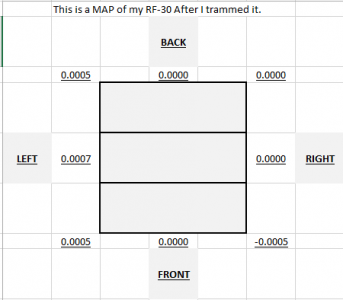- Joined
- Dec 11, 2013
- Messages
- 302
I spent about 2 hours last night dialing in the tram on my RF-30 Mill/Drill.
I used strips of a soda can as shims.
I had to sand down a few strips to get it to where it is now but I was super excited about how it came out.
The distance between measurement is about 7 inches, just under the width of the table.
I saved it on a spread sheet for future reference.
I plan to go back and check it in a week to see if any of the shims have compressed and changed the outcome.

I used strips of a soda can as shims.
I had to sand down a few strips to get it to where it is now but I was super excited about how it came out.
The distance between measurement is about 7 inches, just under the width of the table.
I saved it on a spread sheet for future reference.
I plan to go back and check it in a week to see if any of the shims have compressed and changed the outcome.


